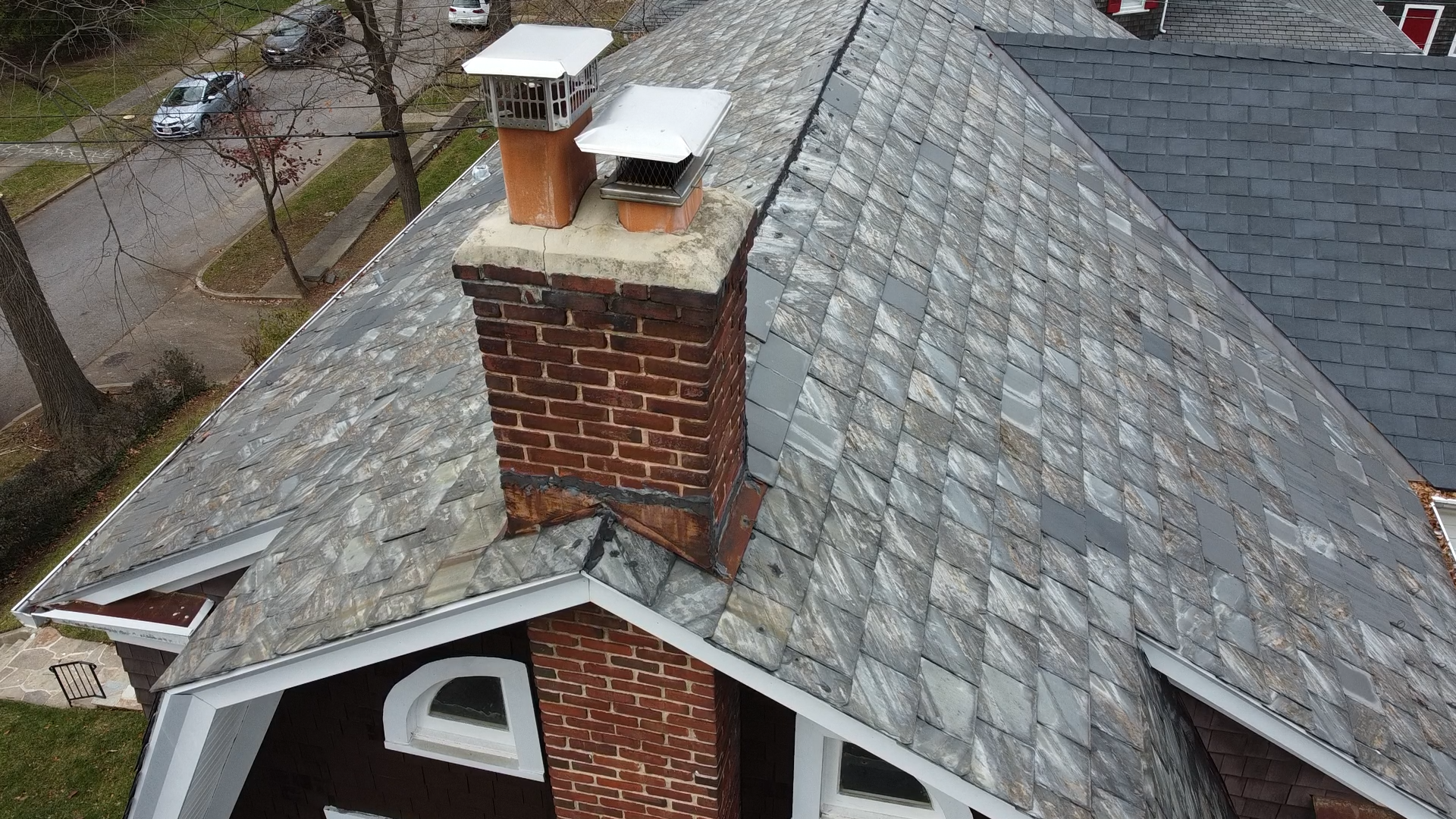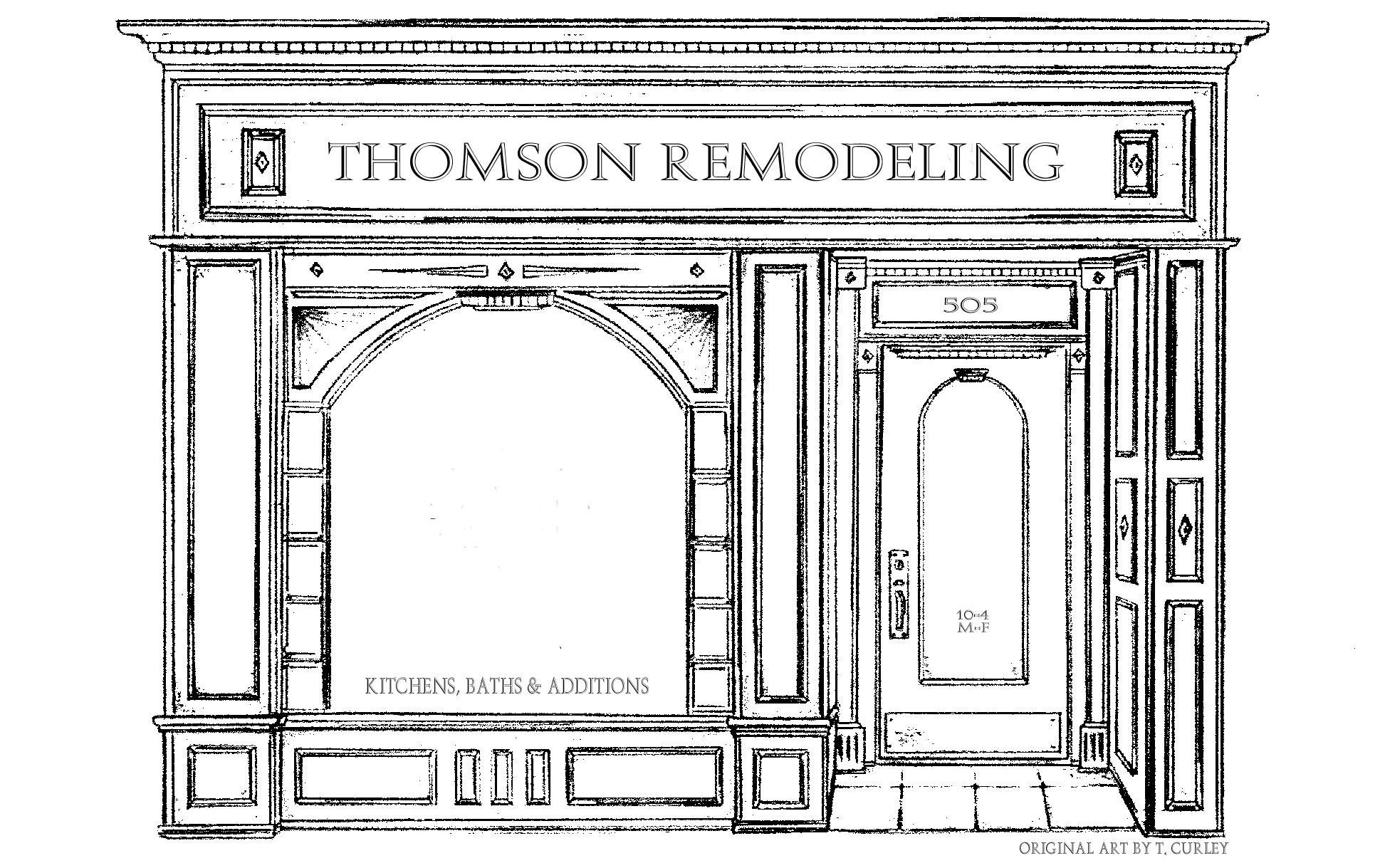Knowing Your Slate Roof
Getting to know your slate roof is the first step to preserving its condition. Traditional building materials abound in Maryland. One of the most prevalent traditional materials and one that adds greatly to the charm and character of local homes is the abundance of slate as a roofing material. A slate roof can be a tremendous asset or it can be an overwhelming liability. Learning and knowing as much about your slate roof can help you maintain your slate as an asset and not allow it to become a liability.
First of all, knowing what type of slate is present on your home will help you understand the life span of your roof. Most types of slate quarried in the eastern United States can be found in the Baltimore-Washington metro areas. Quarries from New England produce the polychromatic slates such as the greens, purples and reds.Pennsylvania and Virginia produce most of the deep, blue-gray slates found in our area.Some geologists believe that one vein of slate runs from Virginia up through Pennsylvania and New England, across the Atlantic and into Wales. Greens, purples and reds are easy to figure that they came from New England. Knowing that you have a slate from New England, you can then estimate a life span of 100-200 years for the slate. Gray slate are a little more difficult to determine the origin. Gray slate will either have a uniform gray color with no signs of deterioration (unfading) or they will show signs of deterioration (fading) and delamination. If the slate on your roof is a uniform gray and has remained so for some time, it is probably either Buckingham or Peachbottom. Buckingham slate is from Buckingham County, Viriginia, south of Charlottesville. Peachbottom was quarried on the Maryland – Pennsylvania line between Delta and Cardiff. Both slates are considered to be among the best ever quarried. Unfortunately, Peachbottom slate ceased to be produced by the 1940s.
The second type of gray slate, (and more common), is quarried in the Lehigh Valley of Pennsylvania. Commonly known as Bangor slate, it can be identified by discoloration appearing around the edges as white rings and eventually by delamination of the layers. Bangor slate deteriorates because it is less dense and therefore allows moisture to be absorbed. As the moisture, (especially acid rain) is absorbed, the water reacts with the calcite and iron sulfides in the slate to produce gypsum. Gypsum is less dense and causes the layers to flake off. If you have flaky slate, it is Bangor slate. Bangor slate is a fifty to seventy year slate. Knowing the age of your house and the fact that Bangor slate is on the roof, one can quickly figure out that the roof is reaching the end of its serviceable condition. Unfortunately, Bangor slate is prevalent throughout our region. In Homeland, Broadmoor Road and Willomere Way were nearly all Bangor slate. Rogers Forge was nearly all Bangor, but there are still a few green roofs.
A third type of gray slate, from the Chapman quarries of Pennsylvania, is common thoughout our region. Chapman can be identified by its diagonal bands of quartz or other minerals running through the slate. These bands do not adversely affect the slate. Chapman is a hard vein, unfading slate that should last 100 years. Chapman should not be confused with faulted slate, which is a Pennsylvania slate with a mineral deposit running diagonally through the slate. Faulted slate usually break easily along the mineral line. So now you may have a better idea of what type of slate you have and if you have a leak, this knowledge will help decide whether the roof is still a worthwhile investment.

Chapman Slate
A little knowledge can go a long way in selecting the right slate mechanic to repair your roof. Quiz your prospective contractor. If he can’t identify what type of slate you have, send him packing.Properly repairing your slate roof could be the most critical step in keeping your slate roof serviceable. In fact, I would prefer to see no repairs done to a roof than repairs done the wrong way. More damage can be done to a slate roof by improper repairs done by unqualified people, than by simply allowing the roof to remain untouched. Broken slates should always be replaced in kind. In other words, don’t allow cement, caulk or tar to be spread over your slates. Nor should slates be “glued” together. Many jack legs travel through the neighborhoods spreading roof cement on good slate roofs. A slate mechanic should have the tools of the trade, too, including a slate hammer, a slate ripper and plenty of slate hooks.
A slate hammer is a hammer with a long spike on one end for punching holes, and a square, flat face on the other and a sharp edge on the shaft for cutting slate. A slate ripper is a long flat black piece of steel with hooks on the end for pulling out broken slate. Slate hooks are used to properly replace slate. A slate hook is driven in the roof after a slate is removed. An new slate is slid into place and held by the hook. Under no circumstances should your slate be nailed into place and bibbed with sheet metal. Modern slate quarries recommend slate hooks.Also, when interviewing your slate mechanic, ask how they intend to do the repairs. Ask what a slate ripper is.
Remember, your slate roof could be your home’s biggest asset or biggest liability. You have the power to ensure that it remains an asset for years to come. Walk around your house frequently and look for slate chips in the garden. Visually inspect your roof. Stick your head out of a dormer window and check your slate. Drive around and look at other people’s slate and compare. Eventually, you will develop an eye for a good slate roof which will help you maintain your own.
Finally, it is important to understand that the flashings, or sheet metal used tomake the roof watertight at house wall junctions, in valleys, crickets, chimneys and other places, will wear out before the slate does. Fifty years is a good life span for copper flashings. Just because a valley has worn out, or there is a leak around the chimney, doesn’t mean that the roof needs to be replaced. Flashing replacement isn’t cheap, but its a pittance when comparing the replacement cost of a slate roof.
